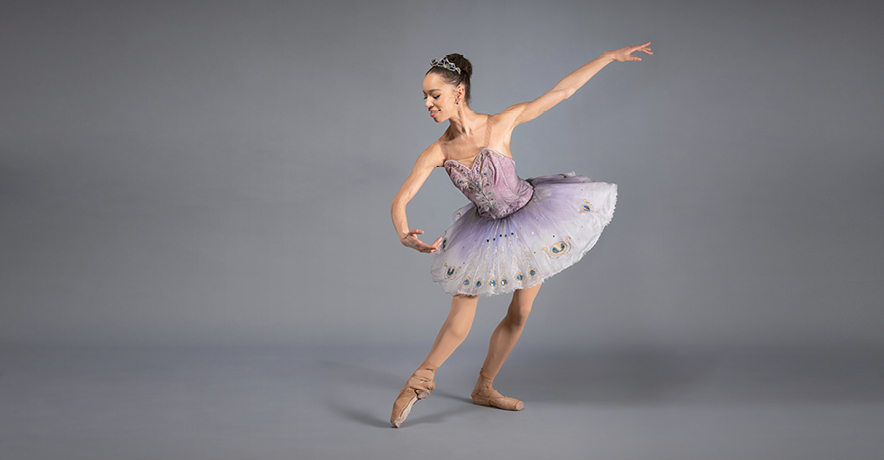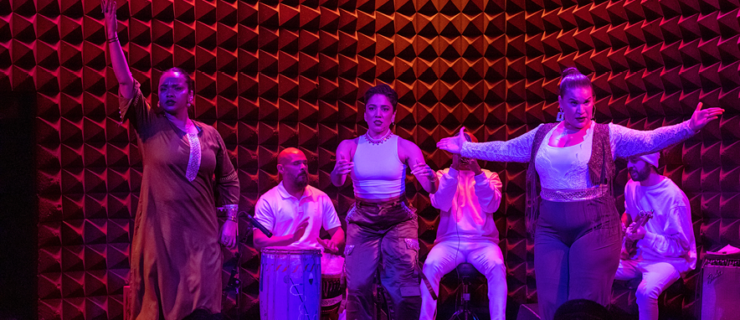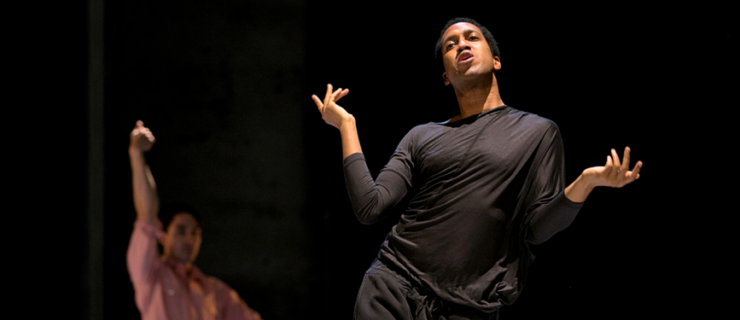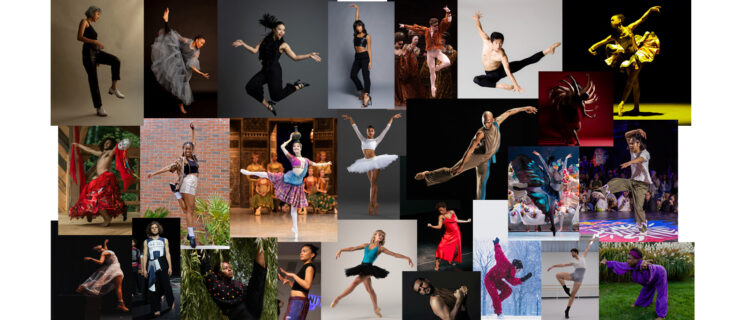Boston Ballet Principal Chyrstyn Fentroy Steps Into Her Power
Boston Ballet principal Chyrstyn Fentroy did not always want a career in ballet. Growing up in Los Angeles, with parents who doubled as her dance teachers—her father was a commercial dancer and her mother, a ballerina—Fentroy easily envisioned a life onstage. The specifics, however, were hazy. “Living in L.A., you can have this Hollywood mindset because it’s at your hand all the time,” she says. Ballet didn’t take center stage for her until she was 18, when she attended her first summer program dedicated to the art form.
There, at the American Ballet Theatre Collegiate Summer Intensive in New York City, she saw her work cut out for her. “I knew I was behind,” she says, describing the jarring effect of her classmates’ comparatively advanced skills. But she fell in love with ballet and the challenge of fulfilling her potential. Her late start, and the tenacity that helped her overcome it, would lead to an illustrious career with Dance Theatre of Harlem and Boston Ballet.
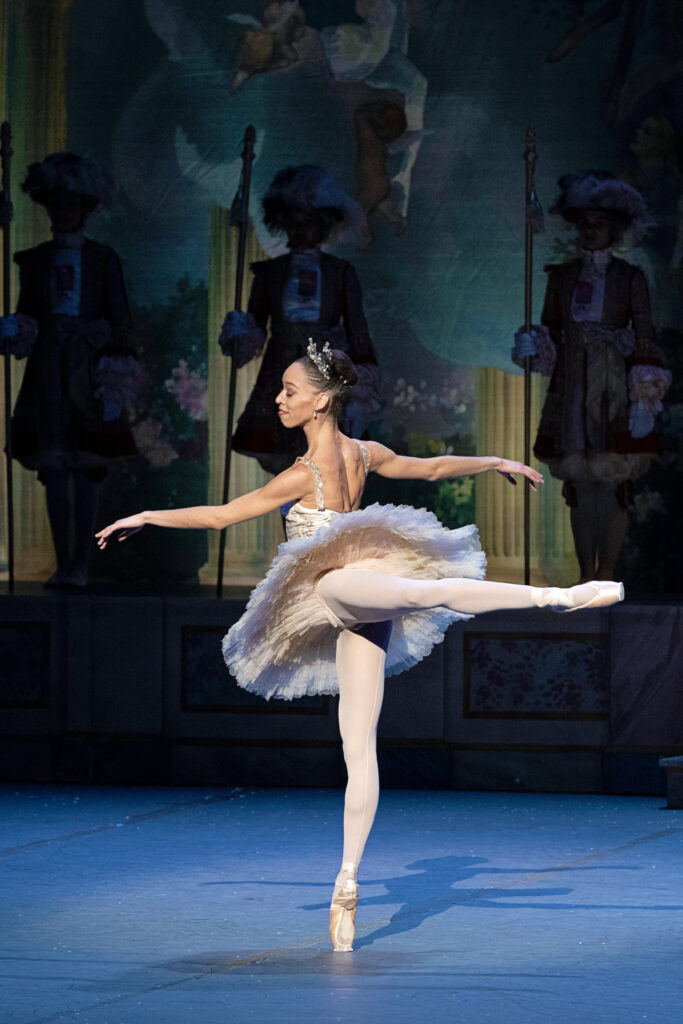
With her crisp, clear-as-a-bell technique, radiant stage presence and spellbinding command of an audience, Fentroy’s uncertain beginning is difficult to imagine now.
In a performance of The Nutcracker at Boston’s Citizens Bank Opera House last December, her Sugar Plum Fairy was met with cheers and a standing ovation. Dazzlingly emotive, Fentroy moves with intentionality, generosity and a sense of freedom. She was “overjoyed and in disbelief” after her promotion to the company’s top rank before a Sugar Plum performance the previous December. “It’s something that I don’t think a younger version of myself would have ever seen in my future,” she says. The achievement coincided with a newfound understanding of herself and the importance of her voice. “I was finally hitting a peak of self-discovery.”
Starting Out
As a child, Fentroy had begun dancing as a matter of practicality more than passion. She took her mother’s ballet classes at the Peninsula School of Performing Arts in Palos Verdes, California, where both parents taught, to stay occupied. After the couple divorced when Fentroy was 7, she was raised by her mother, who danced with regional companies in California. “I was always backstage when my mom would perform,” Fentroy says. “I watched her all the time.”
In her teens, Fentroy became curious about other schools, leading to her pivotal experience at ABT’s intensive. She attended Joffrey Ballet School’s summer course the following year, and that fall, she moved to New York City alone to attend the school’s trainee program on scholarship. She did work-study to help finance her stay in the dorms and worked overtime in the studio to catch up.
“I became obsessed,” Fentroy says. “I had keys to the building, so I would go in and practice in my free time, and I watched a ton of YouTube videos.” She absorbed the versatile, energetic movement style of her JBS teachers, many of whom had been members of The Joffrey Ballet—the Chicago company that’s unaffiliated with the New York City school—and taught by Robert Joffrey and Gerald Arpino, who founded both organizations.
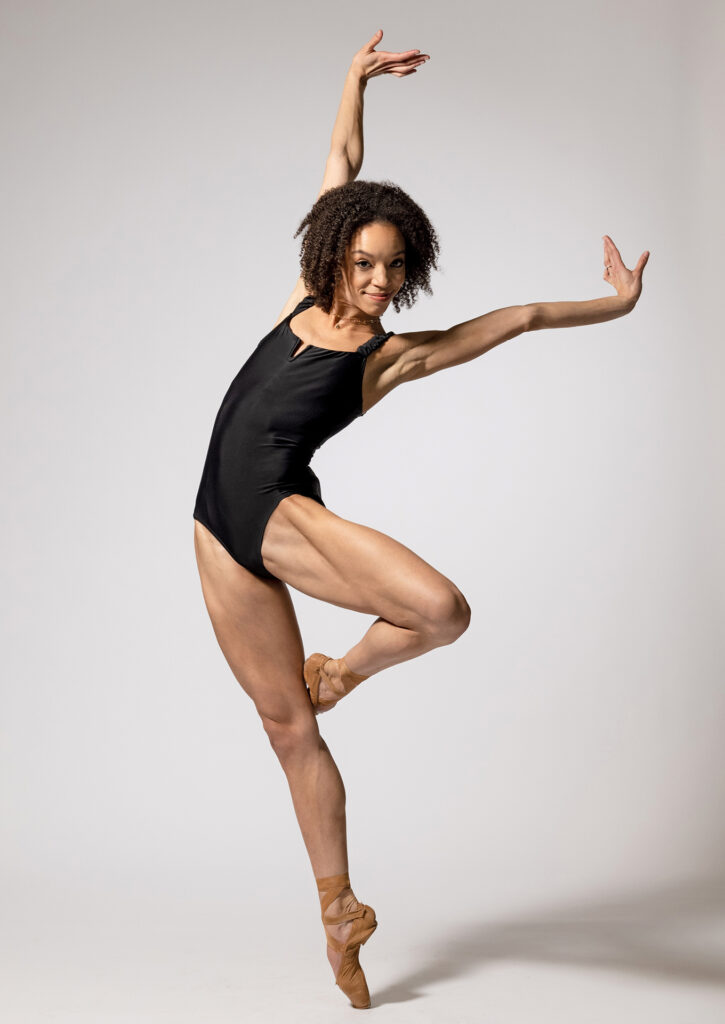
Fentroy joined the school’s student company, now called the Joffrey Ballet Concert Group, giving her a taste of professional life, including touring. For the first time, she was exposed to a wide range of stages, audiences and choreography, and devoured modern, improvisation and contemporary ballet. Her tenure in the concert group served her well when she joined her first professional company, Dance Theatre of Harlem, which she entered during its return from a long hiatus.
Going Professional
Without having risen through the Dance Theatre of Harlem School, Fentroy was in new territory at DTH. “It was a small group, and we were learning so many different pieces, so that we could quickly go on tour and prepare for the year to come,” she says. Despite her burgeoning success, Fentroy’s diligence was developing a dark side: perfectionism, and the harsh self-criticism that tends to accompany it. She felt pressured to prove herself as a new dancer. “I still had this super-studious mindset where I had to be perfect all the time,” she says. “I was really unkind to myself.” But it was also her first time in a predominantly Black ballet environment, where she often felt more at ease than in some previous settings.
Fentroy—whose mother is white and father is Black—had always felt “other” in life as a biracial person but had a sense of belonging in dance. While her mother prepared her to navigate the challenges that her race might present in the ballet world, their conversations veered more toward building Fentroy’s confidence. In the Joffrey Ballet Concert Group, she had become acutely aware of being different: Once, while touring, her fellow dancers took their hair out of buns backstage before attending a reception. Fentroy felt she had to leave her hair in a bun. “No one said anything, but I looked around the room and thought, I am not like these people,” she says. DTH was a stark contrast. “After performances, when we were all pulling our hair out of buns, nobody looked twice,” she says. “I felt like I fit.”
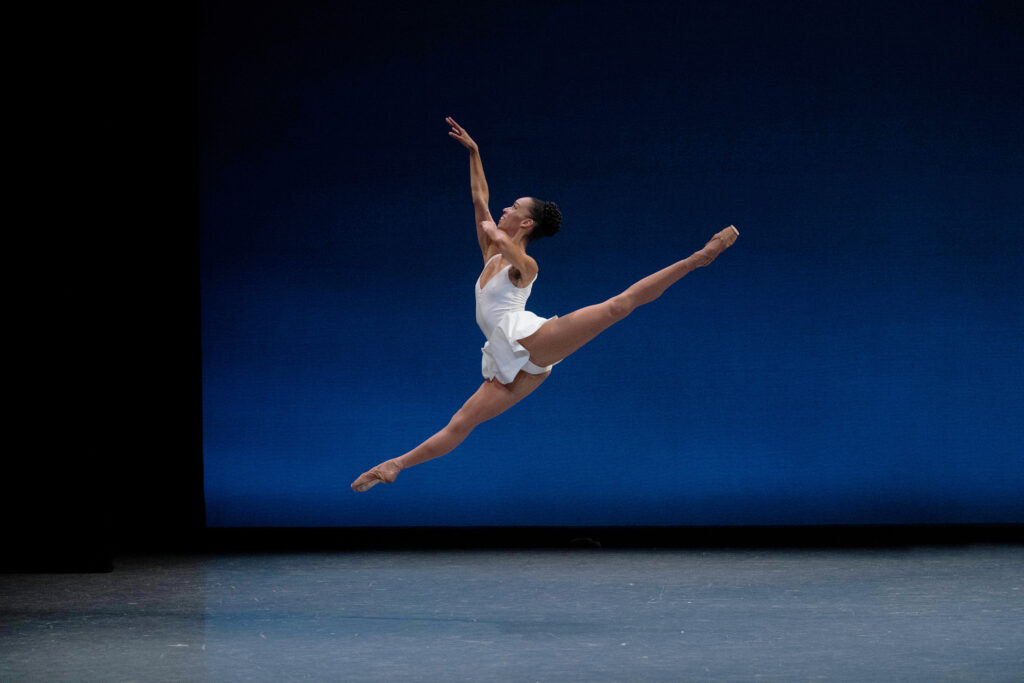
The second pas de trois in George Balanchine’s Agon was one of her formative roles at the company. “I was the solo woman, and it was the first time I was really featured,” she says. And Balanchine’s Tschaikovsky Pas de Deux built her strength and stamina. “It was the first really hard thing that I performed,” she says. “I thought I was going to puke every time we did it.”
Helen Pickett’s duet When Love had a profound impact. “That was the first time I started to find my voice as an artist; to feel comfortable making choices and not feel apologetic about it,” Fentroy says. It marked the beginning of her now-renowned ability to be intensely present and in the moment onstage. “There was something about the freedom the movement gave me—the way I could explore how to reach and push myself in different ways,” she says. “I think that helped me have a level of confidence in myself when I came to Boston and was doing things like Forsythe work.”
New Opportunities
In her fourth season with DTH, Fentroy began considering leaving the company. “I was at an age where I was like, ‘If I don’t take the leap now, I might not be able to do it later,’ ” she says. She was in her mid-20s. Several of DTH’s senior dancers had left, and she was being cast in more lead roles. Though the change pushed her to quickly prepare for the spotlight—which would also later help her in Boston—she felt she had more growing to do and dreamed of being in a larger company and performing work she hadn’t danced before. “I wanted to know what it felt like to be onstage with 50 other dancers,” she says. In 2017, she chose Boston Ballet for its rich, diverse repertoire, spanning classical, neoclassical and contemporary work. Immediately after joining, she began learning ballets by William Forsythe and the company’s resident choreographer, Jorma Elo, in addition to artistic director Mikko Nissinen’s The Nutcracker.
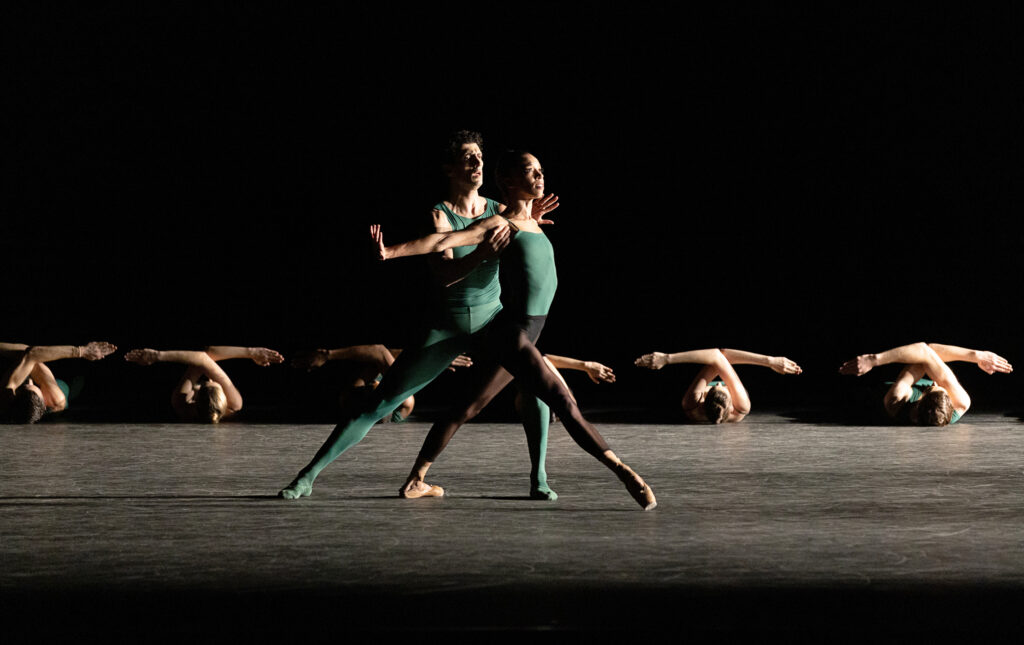
“She’s a stunning dancer, period,” says Nissinen. Early on, he observed Fentroy’s willingness to take creative risks and find the malleability within the boundaries of a piece. “She’s willing to go wherever you want to take her in her dancing. That’s why the audiences get so excited,” he says, citing a performance of Forsythe’s Artifact Suite in 2022 as an example.
Forsythe speaks to Fentroy’s thoughtful engagement with any part she takes on. “Chyrstyn has the capacity to create entirely new perspectives on the works she engages with,” he says. “Her meticulous, critical examination of the roles presented to her consistently produces innovative, definitive interpretations that actually alter the course of that ballet’s future.”
Coming Into Her Own
Treating herself more compassionately has strengthened Fentroy’s ability to do what might be considered a core purpose of art: to express being human. “Not everyone in your audience will know a perfect pirouette, or tendu, or high leg, but everyone can relate to memories and feelings, like anger, love and joy,” she says. She has learned to temper the self-judgment that can be a hurtful corollary to her strong drive. “It’s about being okay with crawling sometimes, and failing as you learn.”
Fentroy uses her exceptional musicality to connect with audiences and execute her creative vision. “If I listen to the music enough, I can hear a different instrument that changes the impulse of how I do a step, and gives me more energy and something to look forward to while I’m dancing,” she says. Theatergoers and choreographers alike are taking notice. “She searches ferociously for the opportunity to musically differentiate any given moment,” says Forsythe.
A prodigious work ethic and sharp attention to detail enable Fentroy to experiment with her art in a way that’s characteristic of masters of their craft. “She lets herself be spontaneous onstage in a delightful way, and my job is to keep up,” says fellow Boston Ballet principal Patrick Yocum, whose first partnership with her was in Elo’s Fifth Symphony of Jean Sibelius. “The moment we went onstage for the first time, she ramped up the performance to Chyrstyn levels, which shocked me at first, because she has this incredible strength.” It is clear that her dancing delves beneath the surface. “She’s doing it because she’s got something to say,” he says, discussing her ability to imbue each movement with meaning. As she has developed her artistry, she has also carried Dance Theatre of Harlem’s ethos of representing something larger than herself.
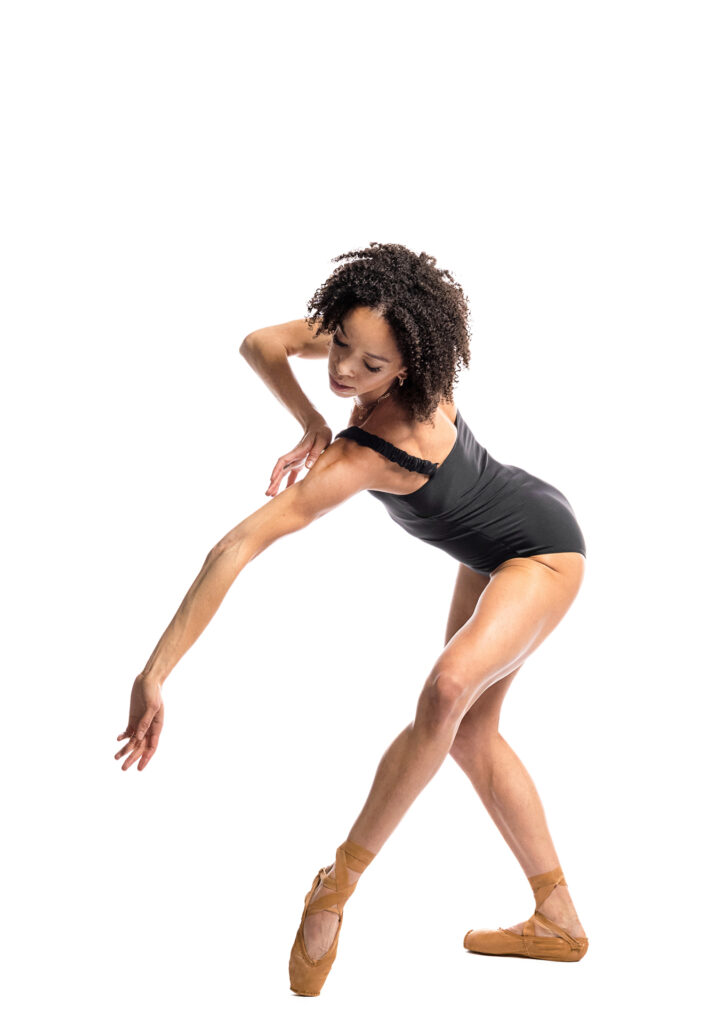
A Force for Change
Since the George Floyd–inspired social justice movement of 2020, Fentroy has taken on a larger role in championing diversity, equity and inclusion. “Becoming a principal dancer gives me the opportunity to utilize my platform a little bit more and be seen on a wider scale, not to be this famous principal dancer, but to be visible to more people who need to see someone who looks like me,” she says. “It’s exciting.”
In 2020, she launched Color Our Future, a virtual, DEI-focused mentorship program to support Boston Ballet School’s pre-professional students during the early pandemic period, and led it until it ended the following year. She remains close with her mentees, and the experience gave her confidence in her leadership ability. In the future, she sees herself creating a similar initiative independently.
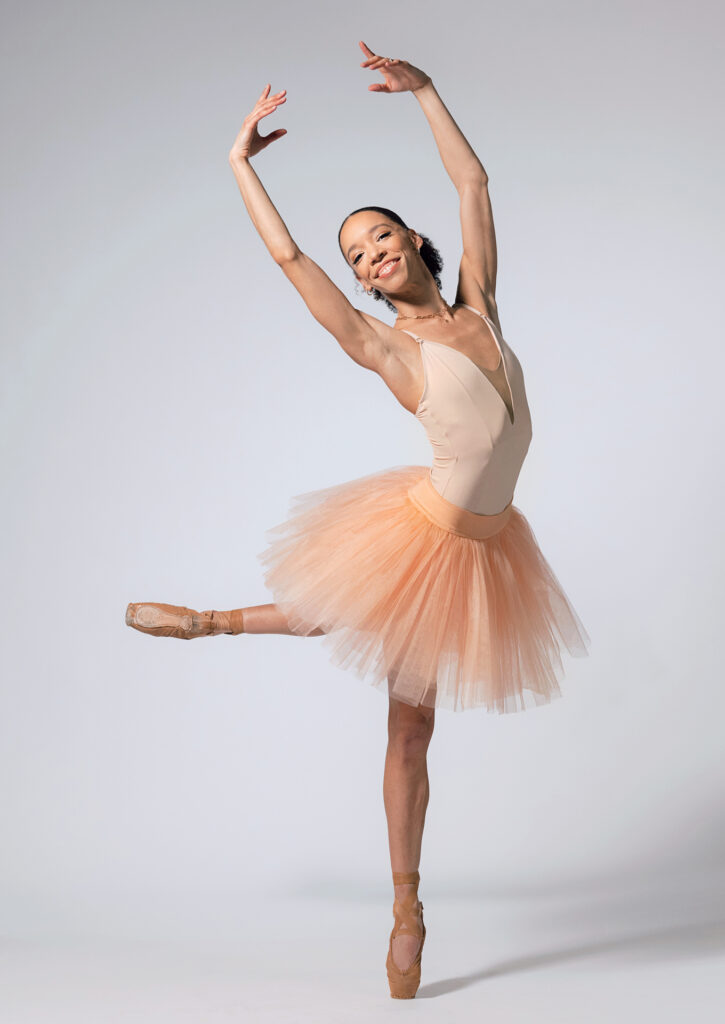
Two years ago, Fentroy danced the opening pas de deux in Balanchine’s Chaconne with her hair down, as is typical for the part. A watershed moment, her hair was in its natural, Afro-textured state. During her first year in the company, she’d danced a corps role in the same piece, and wore a wig for the first performance of the run to try to blend in. “To come back and do this iconic principal role with my short Afro was monumental,” she says. “I couldn’t stop crying because it was so full-circle for me.”
With everything she has accomplished, Fentroy continues to aim high. In the future, she wants to lead a full-length story ballet. Her sights are set on Kitri in Don Quixote and the title role in Giselle. Juliet is her ultimate dream part. “That score makes my heart sing,” she says. This year, Fentroy can plan to be as active as ever. “She will be a busy and happy dancer,” Nissinen says. “She is in the prime of her career.”
